
Rallying to Preserve Our Modern Capitol
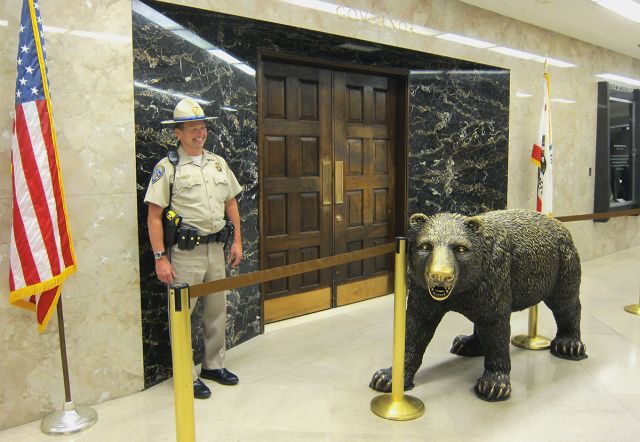 |
The California State Capitol's 'East Annex,' as it is unceremoniously called, may lack the soaring dome, carved woodwork, and classical colonnades that give California’s adjoining, original Capitol building so much appeal.
But does that mean we should tear it down?
That seems to be what our leaders in Sacramento are thinking, as they move forward with plans to provide more office and conference space, updated heating and other building technologies, and a better visitor experience.
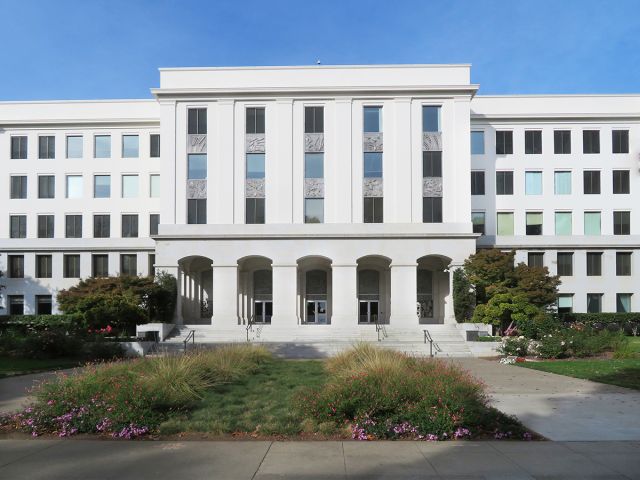 |
Great goals. But must one of the Capitol’s best-known mid-century modern edifices be torn down to achieve them?
Not according to Dick Cowan. He feels so strongly about what he sees as a failure to even consider saving the building, and other aesthetic and historic resources that may be lost because of the project, that he resigned in protest from the Historical State Capitol Commission that had been set up to preserve these values. He'd been its chairman.
Cowan, one of the people behind the preservation group PAC ('Public Accountability for Our Capitol') argues that, just as the original Capitol building from 1874 had fallen into disrepair, yet was lovingly upgraded more than 100 years later, so too could the Annex be restored, improved, and perhaps expanded by putting offices in a basement or elsewhere.
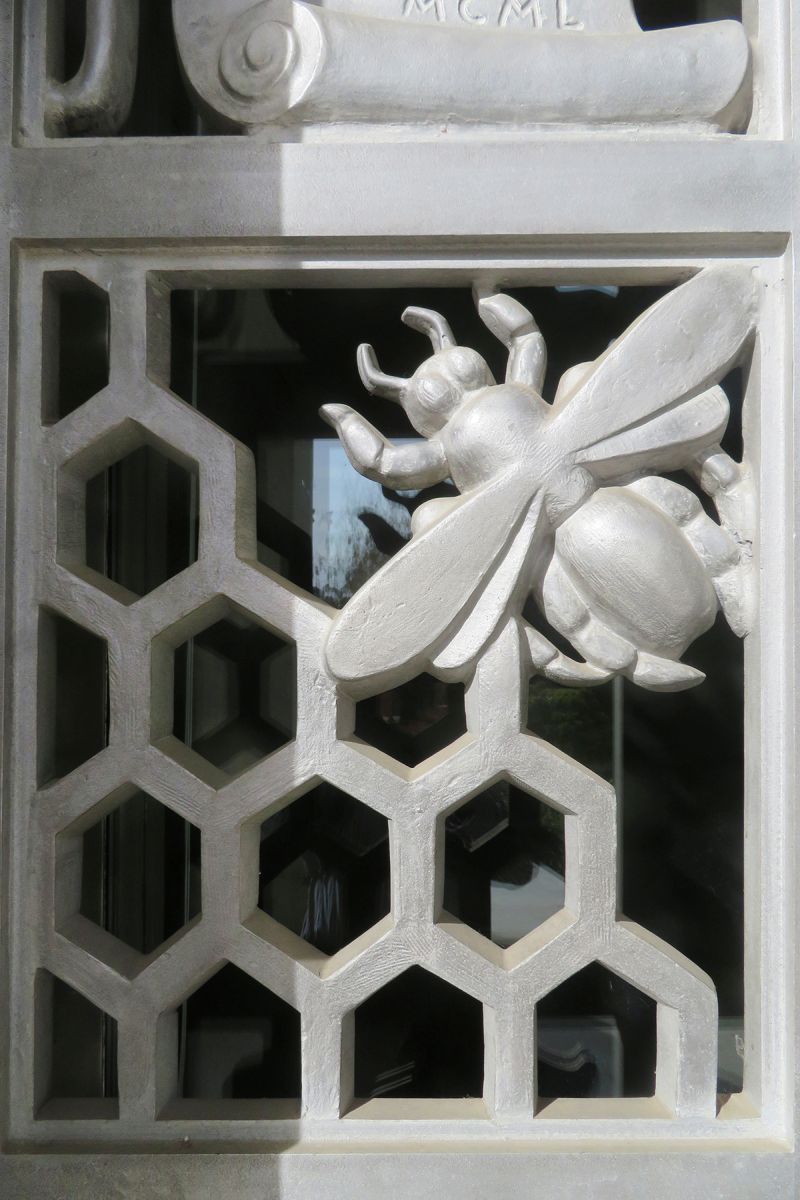 |
“The East Annex was added to the West Wing in 1949‐1951. It was designed in-house by State employees who took pains to blend carefully with the height and width of the West Wing, not overshadow it. It’s a great example of mid‐century modern architecture with spare, clean lines. Its building systems, such as electrical power capacity and air conditioning, are at the end of their life spans and need replacement,” Cowan wrote.
He added, “The phenomenon of not appreciating architecture of the past until it achieves a certain age is too common. I sometimes say that buildings, like people, have ‘awkward teenage years.’ The East Annex, with its spartan mid-century design, will be applauded and appreciated if we can preserve it for just another decade or so. But the Joint Rules Committee argument that it is unattractive and without ornamentation and should therefore be demolished is an unwise argument.”
Indeed, the Annex winningly blends what we today call mid-century modern style with the earlier streamline moderne. The facades of granite and stucco seem deliberately bland, deferring to the older structure. But notice the striking aluminum panels that fill much of the front, lovely designs by artist Olof Karl Malmquist.
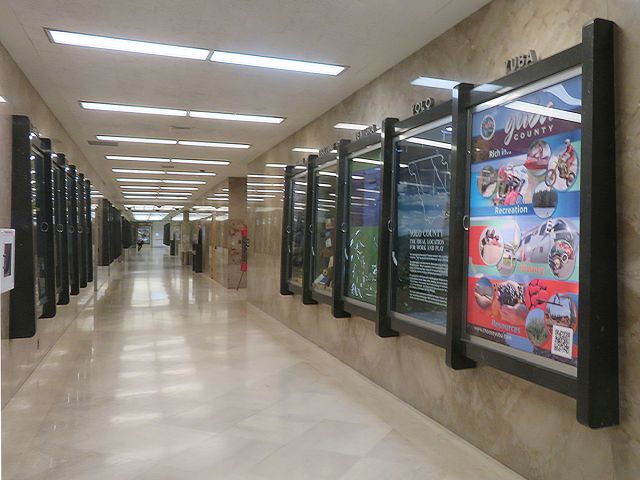 |
Inside, rose marble from Tennessee sheaths the walls on the first floor above a floor of Adorado marble from Missouri. Detailing is crisp and geometric. Attention is paid to even small details, including a wall clock, the type used for room numbers. Marble also frames 58 wall displays, one for each of our counties.
Other artwork, including murals, is integrated into the architecture throughout.
The Annex is part of a National Register Historic District that includes the Capitol and its park.
Besides removing this building, the project would also remove many trees from the Capitol’s park. How many is in dispute. Proponents of the project say about two dozen, but advocates for trees say 100 or more could be removed or relocated.
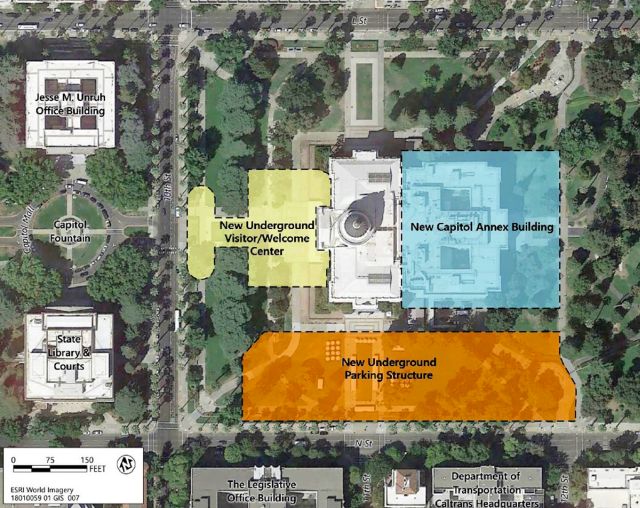 |
Additionally there are concerns that a new visitor center would disrupt the views and historic layout around the Capitol. Some also object plans in the works for underground parking. Let legislators park offsite, they say.
Gretchen Steinberg, president of the preservation group SacMod, has weighed in, arguing that:
“The Annex is a significant historic and cultural resource in its own right: It exhibits features and characteristics of two adjacent historic architectural styles. It was constructed during a significant time in California’s history — as an addition to the historic California State Capitol during a time of unprecedented growth. It is the work of a Master architect and includes artwork by world-renowned artists.”
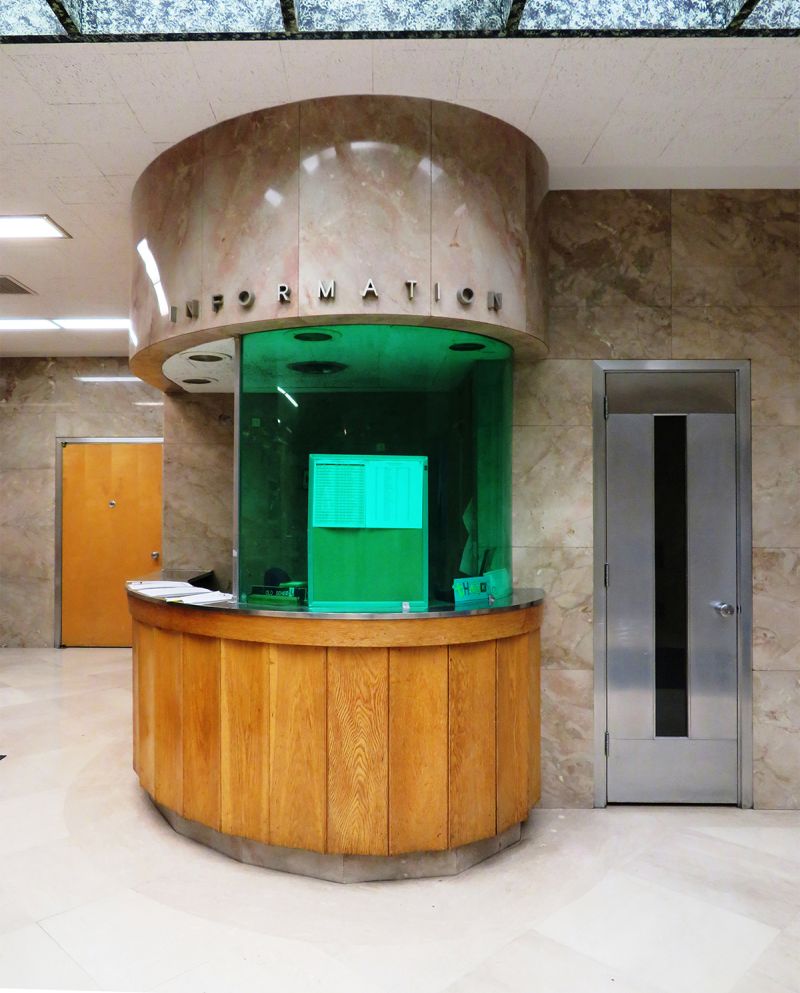 |
The master architect is Alfred Eichler (1895-1977, and no known relationship to homebuilder Joe Eichler), who worked for many years for the state designing many bridges and tunnels, the Veterans Home in Yountville, and countless other structures in a variety of styles, and always stylishly.
Cowan and another member of the commission, who also quit, are angry that legislators have refused to share information with the commission, rendering it ineffective just when its counsel is most needed.
PAC has asked that the state defer action on the project, citing among other reasons the budgetary crisis caused by Covid-19 and the shuttering of much of the economy.
“Renovate rather than rebuild the Annex,” PAC wrote to the legislature in April. “Space can be added to the existing Annex without increasing the footprint. For example, 60 percent additional square feet could be acquired by filling two existing lightwells, and building out the sixth floor penthouse. A renovation could include a new visitor center and office space, and save significant funds to use elsewhere.”
For information on the campaign to preserve the modern capitol, contact PAC at [email protected].
- ‹ previous
- 480 of 677
- next ›



